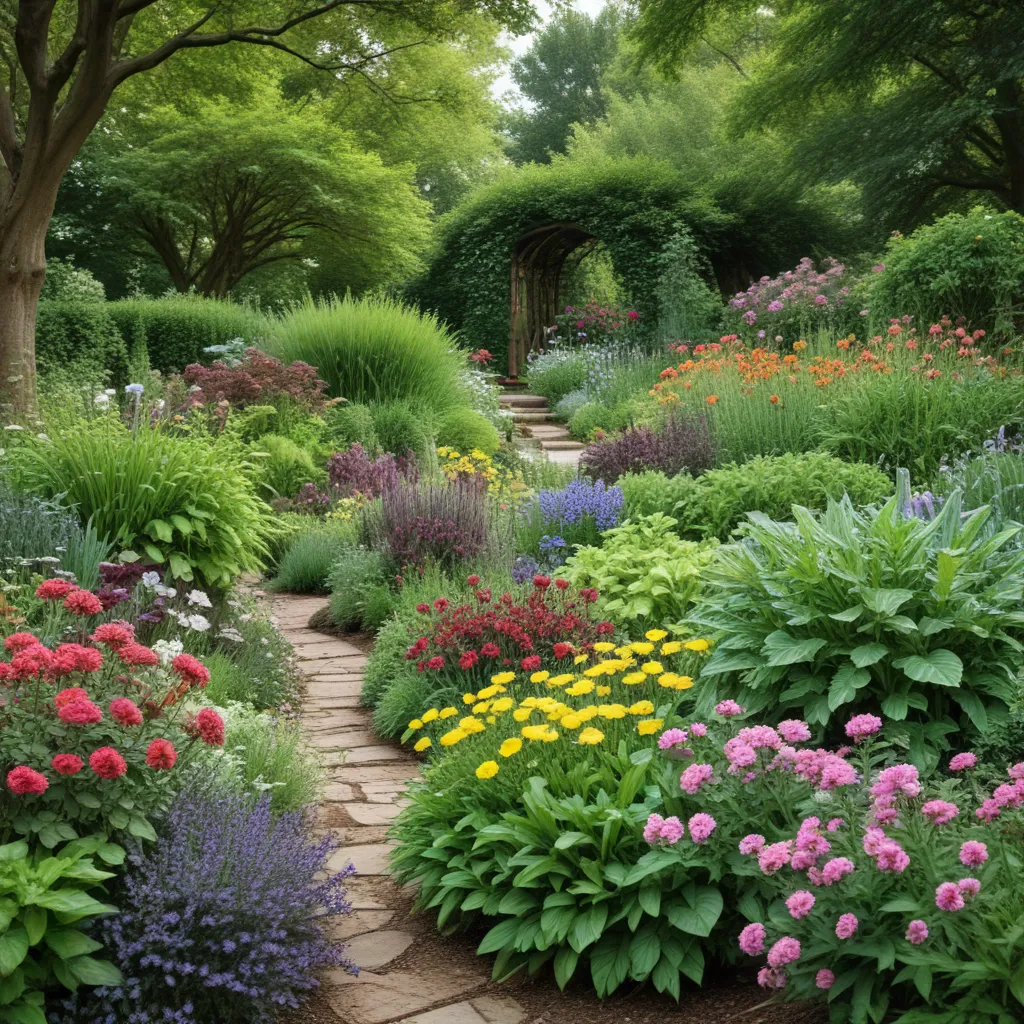
As a hospitality and wine expert at the Wine Garden Inn, I’m delighted to share some of my best-kept secrets for cultivating a bountiful, year-round garden. Whether you’re a seasoned green thumb or just starting to dabble in the soil, these insider tips will help you unlock the true potential of your outdoor oasis.
Seasonal Garden Planning
Successful gardening is all about anticipating the ebb and flow of the seasons. Begin by carefully selecting plants that are well-suited to your local climate and microclimate. For our temperate region, I recommend focusing on cool-season crops like leafy greens, root vegetables, and brassicas during the fall and spring, while transitioning to heat-loving tomatoes, peppers, and summer squash when the temperatures rise.
When it comes to optimal planting schedules, timing is everything. Take the time to research the ideal sowing and transplanting windows for your desired crops. For example, in our zone, cool-season vegetables flourish when sown in early autumn, while warm-season plants should be introduced in late spring to avoid any lingering frost.
Equally important is designing your garden layout with an eye for functionality and aesthetics. Position taller plants to the north to prevent shading of shorter companions, and consider incorporating companion planting strategies to leverage natural pest and disease resistance. Don’t be afraid to experiment – the joy of gardening lies in the journey of discovery.
Soil Preparation Essentials
Healthy plants start with healthy soil, so investing time in soil preparation is a must. Amend your beds with nutrient-rich compost and aged manure to replenish essential nutrients and improve soil structure. If drainage is a concern, consider incorporating perlite, sand, or expanded shale to enhance aeration.
When it comes to cultivation, a gentle touch is key. Avoid overly aggressive tilling, which can disrupt beneficial soil organisms. Instead, use a digging fork to gently loosen the top layer, taking care not to damage the delicate root systems below.
Watering Strategies
Striking the right balance when it comes to watering is critical for plant health and productivity. Consider investing in a simple drip irrigation system or soaker hoses, which can deliver water directly to the root zone with minimal waste. Supplement this with regular soil moisture monitoring to ensure your plants are neither over- nor under-watered.
For those seeking a more low-maintenance approach, integrate drought-tolerant plants like succulents, lavender, and rosemary into your garden. These resilient species can withstand periods of dryness with minimal intervention, freeing up time for other gardening tasks.
Pest and Disease Management
No matter how diligently you tend to your garden, pests and diseases are an inevitable challenge. Stay vigilant in monitoring for common issues, from aphids and powdery mildew to tomato hornworms and cucumber beetles. When problems arise, opt for organic control methods like introducing beneficial insects, applying neem oil, or hand-picking affected foliage.
Preventive measures are also key. Encourage biodiversity by planting a variety of flowers and herbs that attract and support populations of natural predators. Rotate crop families to disrupt the life cycle of pests, and practice good sanitation by promptly removing diseased or damaged plant material.
Seasonal Gardening Tasks
As the seasons change, so too do the demands of the garden. In spring, focus on clearing away debris, amending soil, and making way for new plantings. As summer heat intensifies, shift your attention to consistent watering, mulching, and regular harvesting.
When autumn arrives, it’s time to collect seeds, divide perennials, and prepare your beds for the winter ahead. Don’t forget to insulate tender plants with straw, leaves, or other organic mulches to protect them from the elements.
Greenhouse and Cold Frames
For those seeking to extend the growing season, consider incorporating protected growing spaces like greenhouses or cold frames into your garden design. These structures allow you to start seeds earlier, grow cool-season crops later, and even experiment with more delicate Mediterranean or tropical species.
Within these controlled environments, pay close attention to temperature, humidity, and airflow to ensure optimal conditions. Supplement natural light with supplemental lighting as needed, and don’t forget to factor in ventilation and shading to prevent heat buildup.
Harvesting and Preservation
Timing is everything when it comes to harvesting your garden’s bounty. Monitor crop maturity closely, and aim to gather produce at its peak for maximum flavor and nutrition. Employ gentle, harvest-specific techniques to avoid damaging delicate items like leafy greens or berries.
Once harvested, explore various preservation methods to extend the life of your garden’s gifts. From canning and freezing to drying and fermentation, there are countless ways to savor the flavors of the season long after the last leaf has fallen.
Sustainable Gardening Practices
As stewards of the land, it’s important to embrace environmentally conscious gardening practices. Start by building a thriving compost pile to recycle kitchen scraps and yard waste, then use this nutrient-rich “black gold” to nourish your plants.
Water conservation is also key, especially in our warm, dry climate. Implement strategies like rainwater harvesting, drip irrigation, and the strategic placement of drought-tolerant species to minimize your garden’s thirst.
Beyond that, consider incorporating pollinator-friendly plants that support the health of bees, butterflies, and other vital garden allies. By cultivating a diverse, resilient ecosystem, you’ll enjoy a more bountiful harvest while doing your part to protect the planet.
At the Wine Garden Inn, we’re passionate about using our own estate-grown produce to craft exceptional culinary experiences for our guests. With these insider tips, I hope you’ll be inspired to cultivate a thriving seasonal garden of your own – one that nourishes both body and soul. Happy gardening!
